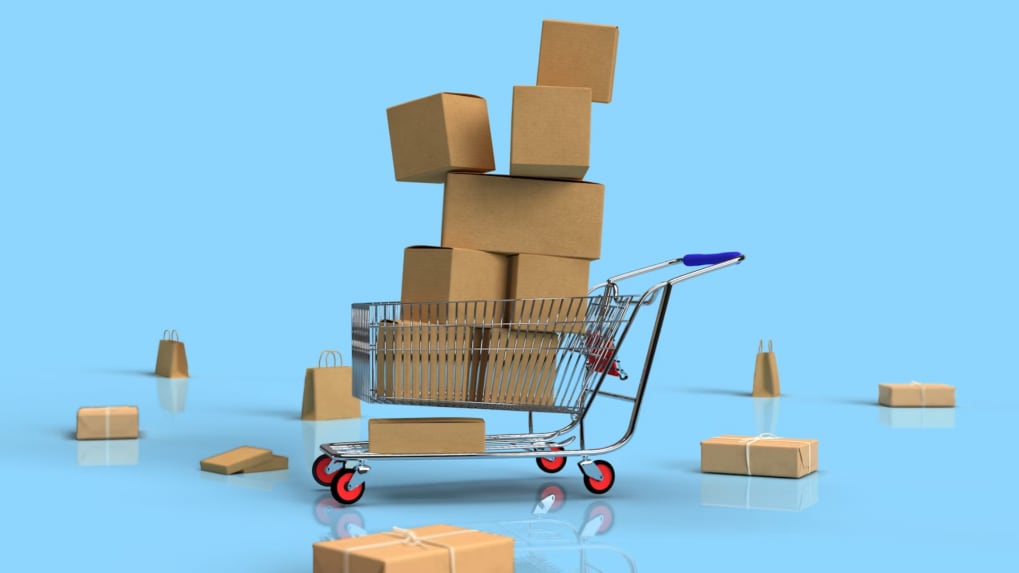Advertising
From Pink Slips to Silent Sidelining: Inside adland’s layoff and anxiety crisis

With the arrival of festivities, the shopping season for Indians have officially arrived. Flipkart's Big Billion Days and Amazon's The Great India Festival commencing from September 23, Myntra's Big Fashion Festival starting from September 20, to name a few ecommerce sales fest are in line to fervor this festive shopping.
"India’s e-commerce sector is projected to generate approximately Rs 1.15–1.20 lakh crore in gross merchandise value (GMV) during the 2025 festive season, reflecting a strong year-on-year growth of around 27%. The recent GST reductions on key consumer goods are also expected to play a catalytic role in accelerating purchase decisions," N. Chandramouli, CEO, TRA Research told Storyboard18.
According to Bain & Company’s How India Shops Online 2025 report, India’s overall e-retail GMV stood at nearly $60 billion in 2024 and is set to grow at 18%+ annually, with tier-2 and tier-3 cities driving the next wave of adoption. Similarly, Datum Intelligence projects that festive ecommerce sales in India could cross Rs 1.2 lakh crore ($14–15 billion) in 2025, reflecting 27% YoY growth.
Meanwhile, the ecommerce market in India is projected to generate revenues of $65.73 billion in 2025, as per a report by Statista. It is further expected to grow at a compound annual growth rate (CAGR) of 11.77% between 2025 and 2030, reaching an estimated market volume of $114.64 billion by 2030.
What does Amazon & Flipkart expect?
The ecommerce industry highly expects electronics, fashion and beauty segment to lead festive sales this year as the Indian festive ecommerce market touched $12 billion in 2024, growing 23% from $9.7 billion in 2023.
"During the festive season, we see strong demand across categories like electronics, home & kitchen appliances, fashion and beauty, leading the growth. The consumer electronics category continues to be one of the fastest growing segments on the marketplace as we are making premium technology affordable through No-Cost EMI options, exchange programs, among other offers," Saurabh Srivastava, VP, Categories, Amazon India said.
Similarly, Flipkart is seeing strong early traction across categories like mobiles, electronics, fashion and beauty. "We expect this festive season to be one of the biggest yet in Flipkart’s journey. Interestingly, beauty and personal care have been among the fastest-growing categories on Flipkart in the past year, reflecting both premiumisation and rising demand from Tier-2+ cities," Pratik Shetty, Head of Growth and Marketing, Flipkart pointed.
When it comes to consumer demand, tier‑2 and tier‑3 cities are now at the heart of festive shopping growth. "During the last Amazon Great Indian Festival, we saw a record 140 crore customer visits, with over 85% coming from non-metro cities, along with the highest-ever single-day Prime sign-ups in the first 48 hours. Prime Day 2025 had 70% of new sign-ups from Tier‑2 and Tier‑3 cities, and orders peaking at more than 18,000 per minute," Srivastava explained.
For Flipkart, what’s interesting is that these customers are not just shopping for value-led products; they’re increasingly exploring premium categories too. "The rise of regional creators, live commerce formats and vernacular engagement has made e-commerce far more inclusive and accessible in these markets," Shetty added.
Where does the money lies?
While these ecommerce firms didn't comment on their advertising spends, they highlighted that rather than increasing the spends, they choose to allocate the budget smartly to maximise the impact.
"One of the most notable shifts this year is a significant increase in Connected TV investments, which reflect the growing base of cord-cutters in India. Our approach blends traditional with digital-first formats, from Bollywood legends like Amitabh Bachchan and Alia Bhatt to Gen Z creators like Yashraj Mukhate and Jannat Zubair to relate across generations," Shetty revealed.
Experts believe that advertising and marketing expenditure during the 2025 festive season is set to witness a significant uptick, led by aggressive brand campaigns and platform-led promotional pushes. Atul Mehta, CEO - Domestic Shipping at Shiprocket believes that AI-driven recommendations and influencer-led promotions directly influence 84% of consumer purchases, particularly in fashion and beauty. "Live commerce, social media engagement, and digital ads are now far more impactful than traditional formats."
"Digital-first formats such as influencer marketing, live commerce, and social media-led discovery are expected to dominate spends, particularly in high-engagement categories. Traditional media, including television and print, will continue to hold relevance for broader audience outreach, especially in Tier 2 and Tier 3 markets, but the strategic weight is clearly shifting towards performance-led digital ecosystems," Chandramouli commented.
When it comes to revenue, the festive quarter typically contributes between 25% to 30% of annual ecommerce revenue. Given this year’s favourable conditions, the contribution could edge closer to or even exceed the 30% mark. Quick commerce is also emerging as a growth driver, with an expected $1 billion contribution to festive GMV.
From purpose-driven work and narrative-rich brand films to AI-enabled ideas and creator-led collaborations, the awards reflect the full spectrum of modern creativity.
Read MoreLooking ahead to the close of 2025 and into 2026, Sorrell sees technology platforms as the clear winners. He described them as “nation states in their own right”, with market capitalisations that exceed the GDPs of many countries.